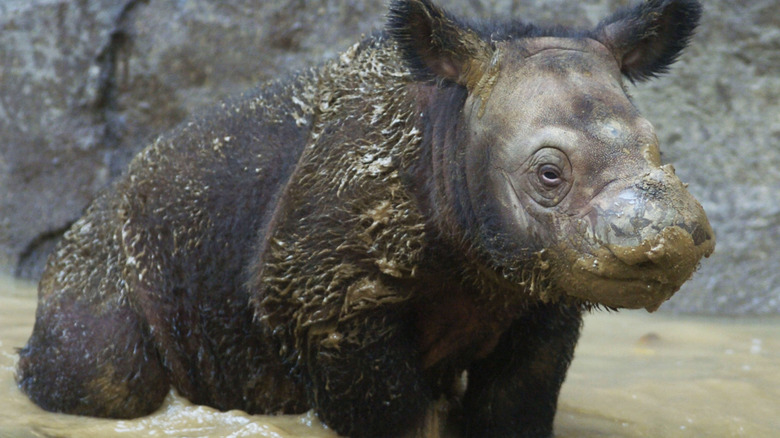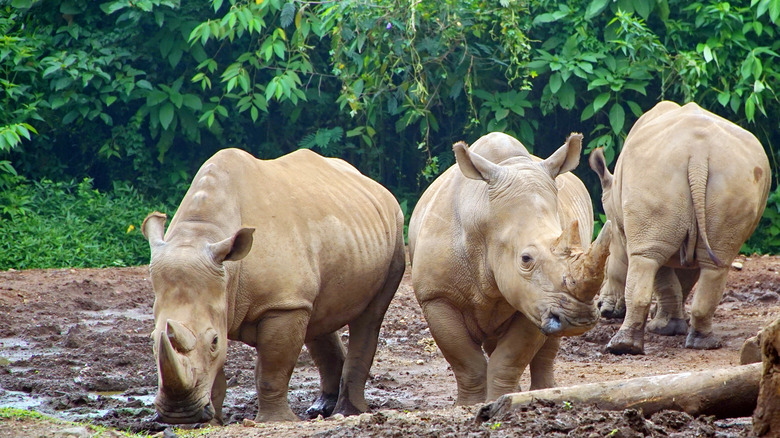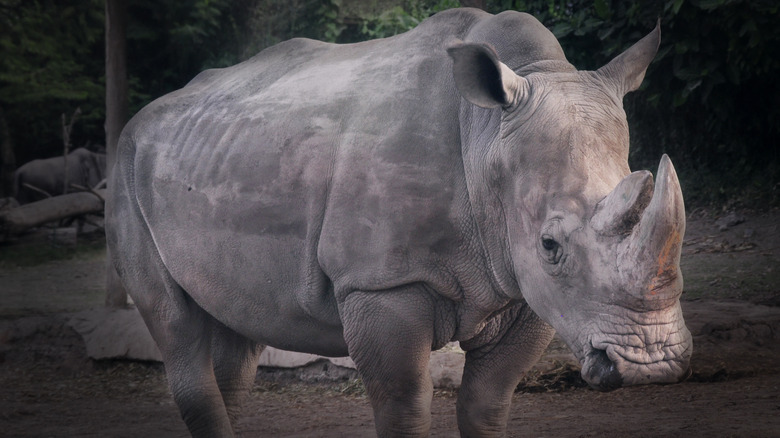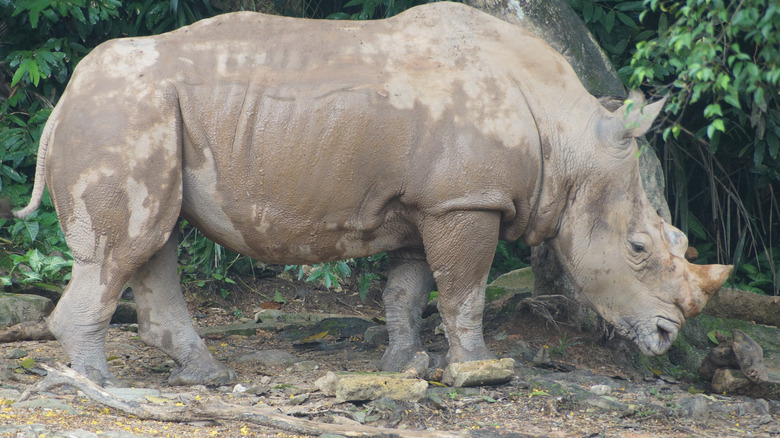The Sad 2019 Death Of Iman, The Last Sumatran Rhino In Malaysia
The Sumatran rhinoceros is a critically endangered species, poised to quickly phase out of existence if extreme measures are not taken by conservationists (via National Geographic). While there are believed to be fewer than 80 of the two-horned, majestic-looking species left in the world, up until quite recently there was some hope for the rhino in Malaysia (per Mongobay). Or rather, there was Faith, which is what the name Iman translates to in English from the Arabic language.
Iman used to be the last remaining Sumatran rhino in Malaysia; an esteemed but solitary title. The nation's ability to bring the species back hinged on her health. Unfortunately, when she was placed in captivity, the 25-year-old rhino was already deteriorating; suffering from a disease experts believe is brought about by the same social isolation that made her so special. Part of what makes the fate of Iman tragic is the fact that she effectively died from loneliness (via National Geographic).
How Iman became the last surviving Sumatran rhino in Malaysia
In order to understand who Iman was, it's important to reflect on where she came from. How did Iman become the last surviving rhino in Malaysia? The sad truth is that she and her once-abundant ancestors were overhunted for their distinguished-looking horns.
According to World Wildlife, the Sumatran Rhino's horns, made of simple keratin, the same material found in human fingernails, were once a hot commodity for trade. The 1990s proved a brutal time for the species, which is notably smaller than other rhinos. Habitat loss and agricultural expansion left this small breed of rhino to compete with other larger members of the species for land and space, a battle that the species was losing.
In May 2019, the last male Sumatran rhinoceros in the region died (via BBC), leaving only Iman, who was fighting a losing battle with her health.
The sad life and death of Tam, Iman's only potential mate
According to BBC News, some optimistic experts claim that the Sumatran rhino species could be rescued from inevitable extinction if just 20 of the remaining 80 rhinos were bred successfully. This might sound like a long shot, but other animals, like the bald eagle and the American bison, have seen their population numbers plunge from millions to just hundreds and then they unexpectedly bounced back against all odds (via AZ Animals). While there appears to be enough of the Sumatran rhino species now living in the wild or captivity to attempt a revival, it's more than just a numbers game. The ticking biological clock must also consider things like age and overall health.
Take, for example, Tam, a seemingly healthy Sumatran rhino that was living out his last days on a Malaysian reserve. In 2012, attempts to breed Tam with Punting, a female Sumatran rhino captured at the tender age of 12, proved unsuccessful, despite experts claiming they were of an "ideal age for breeding" (per The Guardian). The potential mated pair were held in adjacent paddocks and engaged in a courtship. Five short years later, it would become evident that Puntung had late-stage cancer, and injuries she sustained at the hands of a poacher had already rendered her infertile. The mating between Tam and Puntung was doomed from the start.
Conservationists made one last attempt to breed Tam with Iman, but by 2019 he was too old to reproduce. Shortly afterward, Tam died, leaving only Iman.
There are no more Sumatran rhinos left in all of Malaysia
The Sumatran rhino is unique in many ways. While it is most certainly the smallest of the rhinos, it simultaneously holds the title of largest land mammal on the brink of extinction. A-Z Animals reports that while habitat loss and poaching have played a significant role in reducing this rhino's population, the species is now believed to have been teetering on the edge of extinction for approximately 9,000 years, when drastic climate changes left just 700 of them in existence.
In the curve of the hairy Asian Rhinocerotidae's horn is a key linking us not only to the future, but also to the past, as this creature is believed to be the closest surviving relative of the ancient woolly rhino that was driven into extinction about 8,000 years ago. National Geographic reports that, like Puntung, Iman died of cancer, but the fibroids and cysts that developed along her reproductive tract were a sign that she went without a mate for too long. In the end, it was neither climate change nor poaching nor habitat loss that ultimately took her life. Rather, it was the state of isolation she was involuntarily driven to as a result of these things. Today, in the wake of Iman's demise, the Sumatran rhino is now officially extinct throughout all of Malaysia.



